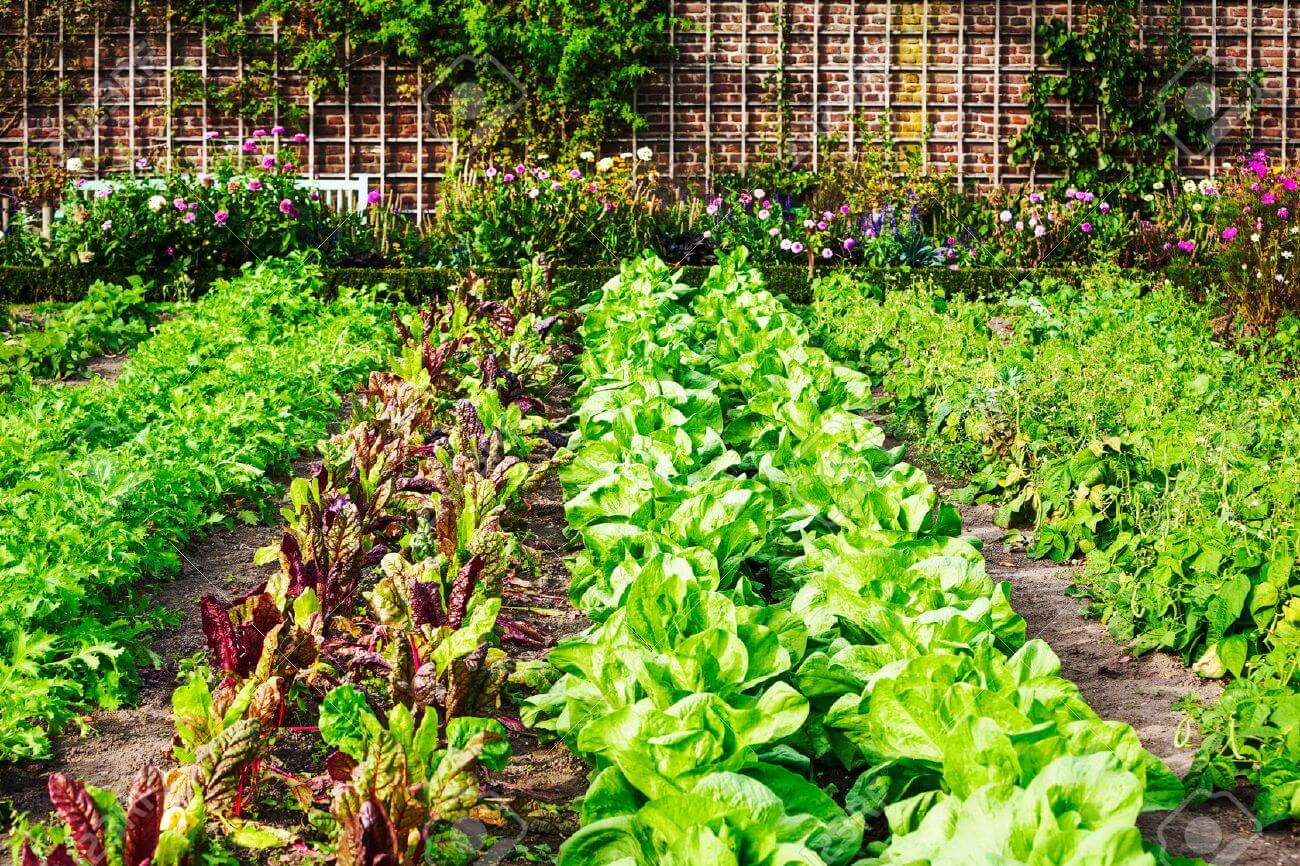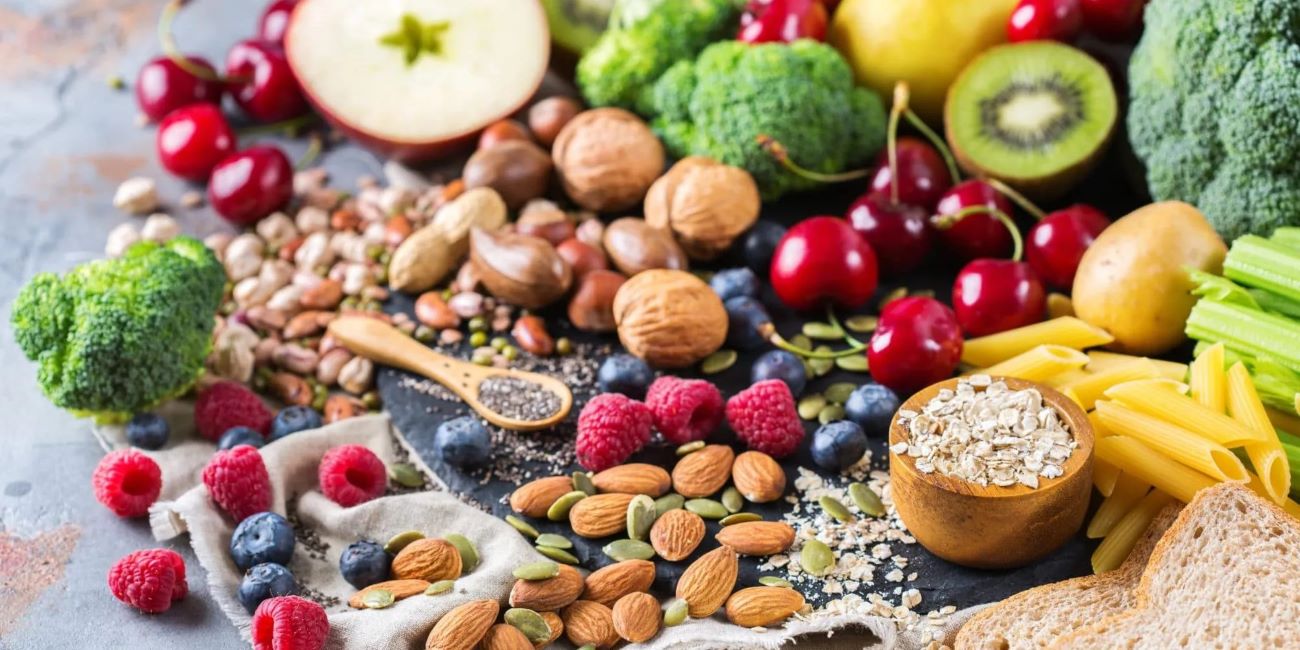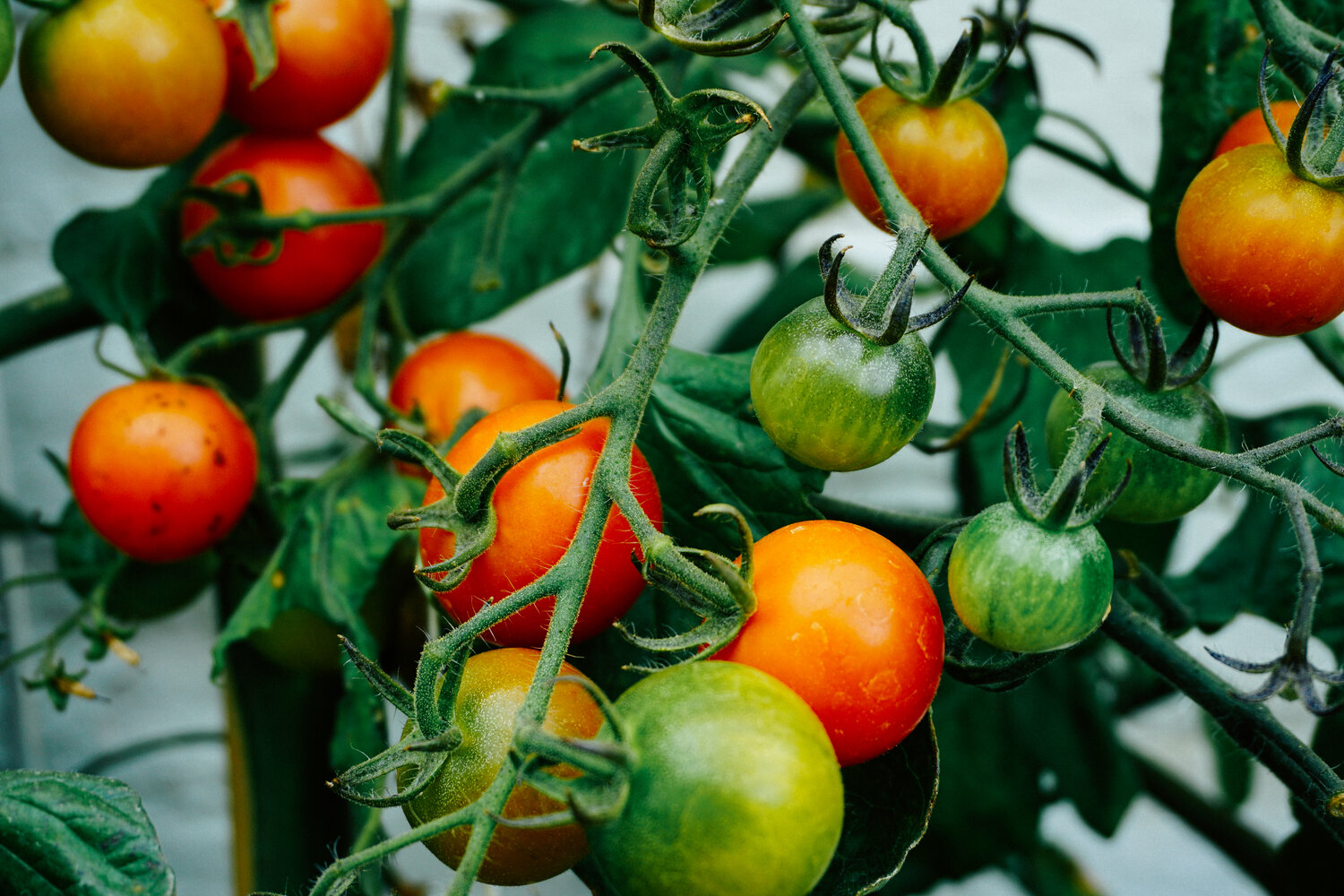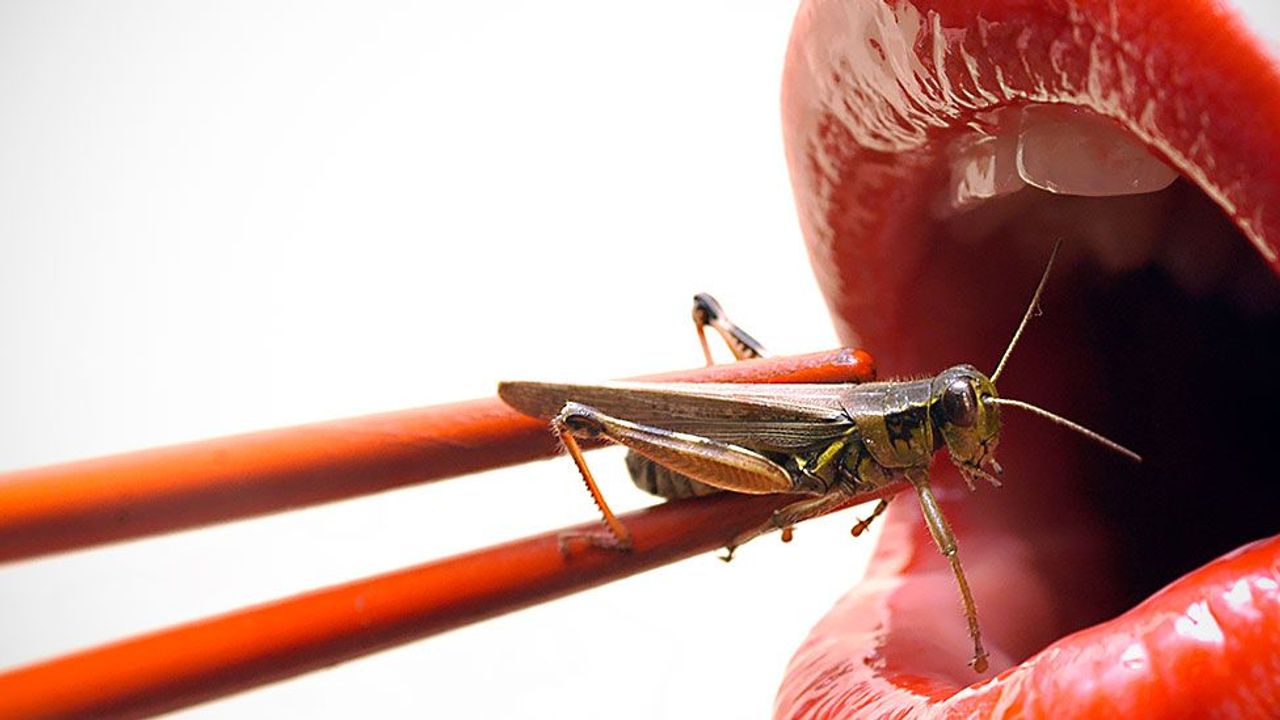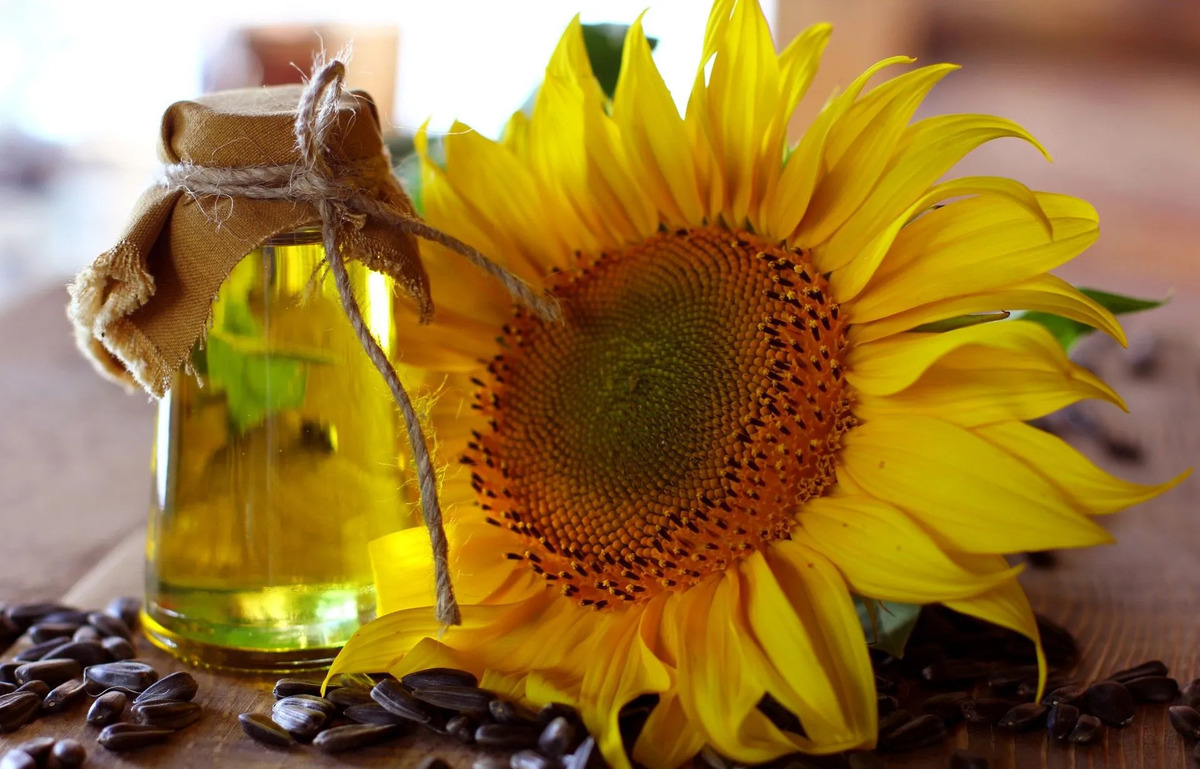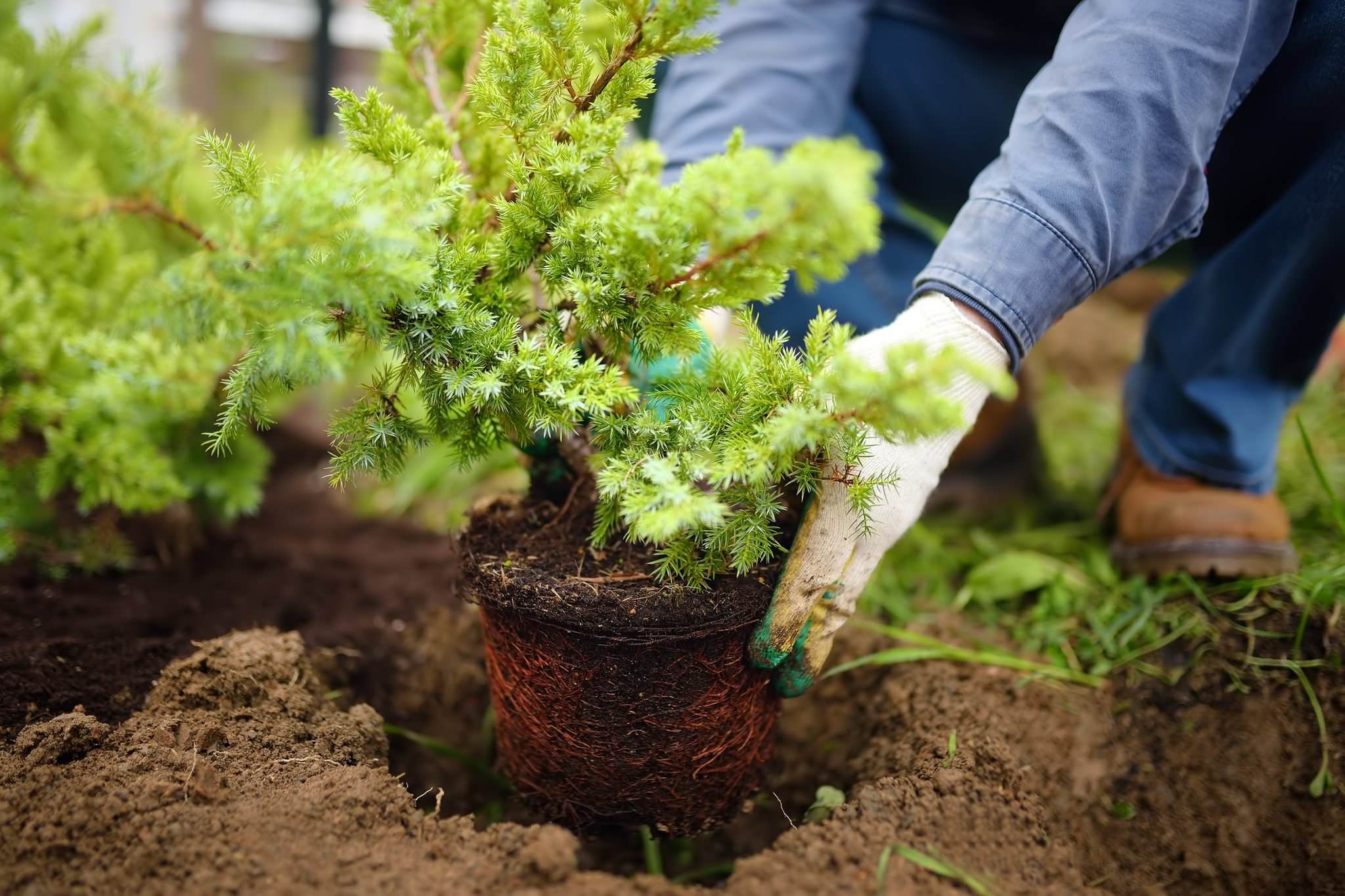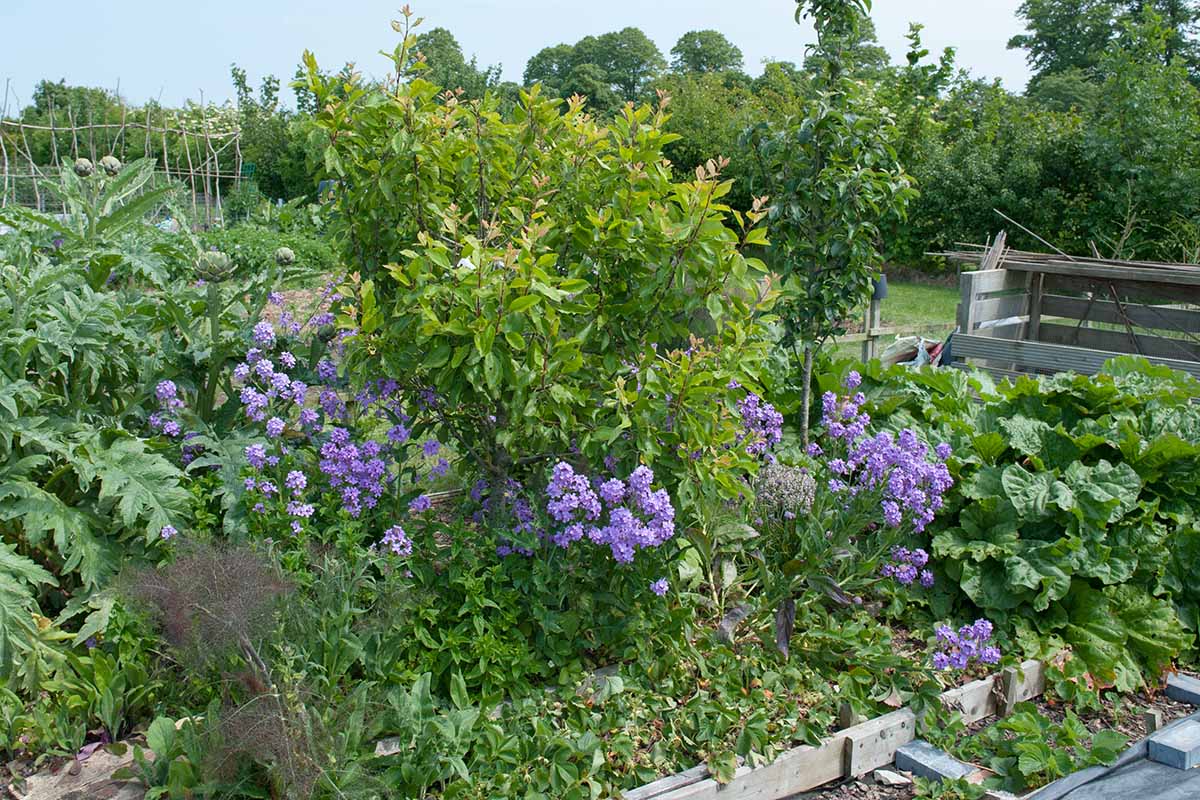Home>Gardening Techniques>Seasonal Gardening>What Vegetables Can You Plant In September
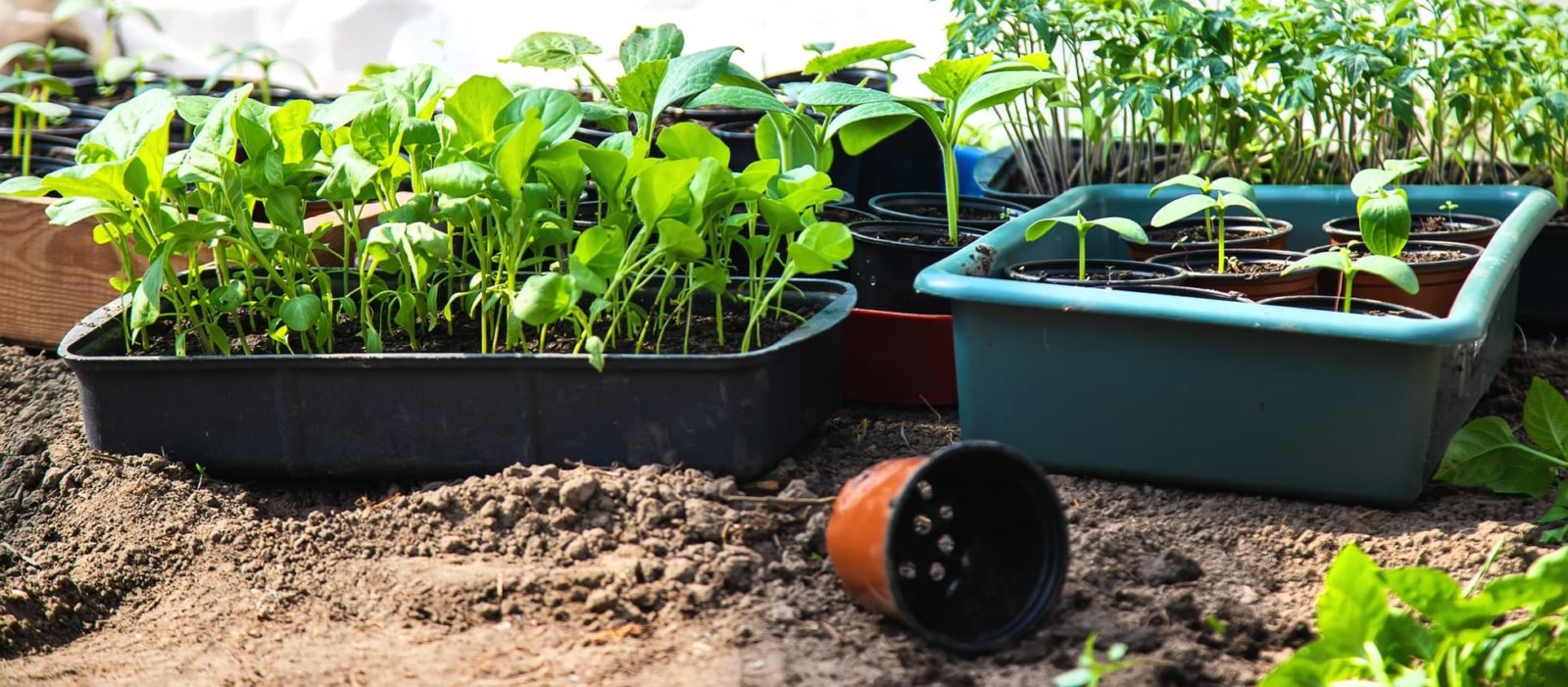

Seasonal Gardening
What Vegetables Can You Plant In September
Modified: January 22, 2024
Discover the best vegetables to plant in September for a successful seasonal gardening. Maximize your harvest with our expert tips and advice.
(Many of the links in this article redirect to a specific reviewed product. Your purchase of these products through affiliate links helps to generate commission for Chicagolandgardening.com, at no extra cost. Learn more)
Table of Contents
Introduction
As the crisp autumn breeze begins to replace the warmth of summer, the gardening season doesn’t have to come to an end. September, with its cooler temperatures and longer nights, presents a wonderful opportunity to continue growing vegetables. Many gardeners are often surprised to discover the wide range of vegetables that can be successfully planted during this time. Whether you’re a novice or experienced gardener, planting vegetables in September can bring many benefits and rewards.
Firstly, September plantings offer a chance to extend your harvest well into the fall and even winter months. By starting now, you’ll have fresh produce long after the summer crops have been harvested. Secondly, September planting allows you to take advantage of the ideal growing conditions. The cooler temperatures and increased moisture create the perfect environment for seed germination and plant growth. Additionally, there tends to be less competition from pests and diseases during this time, reducing the need for extensive pest control measures.
Before diving into your September planting adventure, there are a few important factors to consider. Firstly, assess your location and climate. Different regions have varying weather patterns and frost dates, which determine which vegetables are best suited for September planting. Consult your local agricultural extension office or gardening resources to understand the specific conditions in your area. Secondly, take into account the maturity time of the vegetables you plan to plant. Since days are getting shorter in September, vegetables with longer maturity periods may not have sufficient time to fully develop before frost arrives.
Now, let’s explore a variety of vegetables that are particularly suitable for planting in September.
Benefits of Planting Vegetables in September
Planting vegetables in September offers a multitude of benefits for both seasoned gardeners and beginners alike. Let’s take a closer look at some of the advantages:
- Extended Harvest: By planting vegetables in September, you can enjoy a bountiful harvest well into the fall and sometimes even throughout the winter. This means you can continue to enjoy fresh, homegrown produce for months to come.
- Ideal Growing Conditions: September offers favorable weather conditions for vegetable gardening. The cooler temperatures and increased moisture create an optimal environment for seed germination and plant growth. Additionally, the reduced heat and lower humidity levels can help minimize common gardening problems such as fungal diseases.
- Reduced Pest Pressure: With the arrival of fall, many common garden pests start to decline in population. This means you’ll likely face less competition from pests that can damage your plants. You can spend less time and effort on pest control measures, allowing you to focus more on nurturing your plants.
- Less Watering and Maintenance: As the temperatures cool down, the evaporation rate decreases, meaning your plants will require less frequent watering. This can be a time-saving benefit, as you won’t need to water as frequently as you would during the hot summer months. Additionally, the reduced weed growth means less time spent on maintenance tasks.
- Variety of Vegetables to Choose From: September planting opens up a wide range of vegetable options. Many cool-season vegetables thrive in the fall, and planting in September gives them enough time to grow and mature before the arrival of frost. This allows you to experiment with new varieties and expand your culinary palette.
By taking advantage of the benefits of planting vegetables in September, you can continue to enjoy the satisfaction of growing your own food and savor the flavors of freshly harvested produce.
Factors to Consider Before Planting in September
Before diving into your September planting endeavor, it’s important to consider a few key factors to ensure successful growth and a fruitful harvest. Here are some factors to keep in mind:
- Climate and Frost Dates: Different regions have varying climate patterns and frost dates. It’s crucial to know the average first frost date in your area as it will dictate which vegetables are suitable for September planting. Planting vegetables that need a longer growing season may not be ideal if your region experiences an early frost.
- Maturity Time: The maturity time of vegetables is an important factor to consider. Since September days are shorter compared to the summer months, vegetables with longer maturity periods may not have enough time to fully develop before the onset of frost. Look for varieties that have shorter maturity times to ensure a successful harvest.
- Soil Preparation: Proper soil preparation is essential for the success of your September plantings. Take the time to amend the soil with organic matter, such as compost, to improve its fertility and drainage. This will provide your plants with the necessary nutrients and a healthy growing environment.
- Watering: While the need for watering may decrease in September due to cooler temperatures, it’s still important to monitor soil moisture levels. Adequate watering is crucial during the early stages of growth to help plants establish strong root systems. Mulching around the plants can help retain soil moisture and reduce water evaporation.
- Protection from Cold Snaps: September can still bring unexpected cold snaps. Be prepared to protect your plants from sudden drops in temperature by covering them with row covers or using protective structures like hoop houses. These measures can help extend the growing season and protect your plants from frost damage.
By considering these factors and planning accordingly, you can set yourself up for success in your September plantings. With proper preparation, you can create the optimal growing conditions for your vegetables and maximize your harvest.
Vegetables Suitable for Planting in September
September planting offers a wide selection of vegetables that thrive in the cooler temperatures of fall. While the specific options may vary depending on your region and climate, here are some vegetables that are generally suitable for planting in September:
- Broccoli: Broccoli is a cool-season crop that can tolerate light frosts. Planting it in September allows it to mature during the cooler months, resulting in sweeter and more tender florets.
- Brussels Sprouts: Brussels sprouts require a longer growing season and are best planted in early September. They thrive in cooler temperatures and their flavor improves after a light frost.
- Cabbage: Cabbage is a hardy vegetable that can withstand frost. Planting it in September allows it to develop strong heads before the arrival of winter.
- Cauliflower: Like broccoli, cauliflower is a cool-season crop that performs well when planted in September. It requires a longer growing season to reach its full size.
- Kale: Kale is a nutrient-dense leafy green that thrives in cooler temperatures. Plant it in September for a winter harvest of tender and sweet leaves.
- Lettuce: Lettuce is a quick-growing vegetable that prefers cooler temperatures. By planting it in September, you can enjoy a fresh salad well into the fall and even winter months.
- Spinach: Spinach is another cool-season green that can be planted in September. It’s rich in vitamins and minerals and can be harvested continually throughout the season.
- Radishes: Radishes are quick-growing root vegetables that are perfect for September planting. They tolerate cooler temperatures and can be harvested in just a few weeks.
- Carrots: Carrots are a versatile and nutritious root vegetable. Planting them in September allows them to develop a sweeter flavor as the temperatures cool down.
- Beets: Beets are hardy vegetables that can tolerate cooler temperatures. September planting ensures a plentiful harvest of sweet and earthy roots.
- Swiss Chard: Swiss chard is a leafy green that can be planted in September for a continuous harvest throughout the fall. It can withstand light frosts and its vibrant stems and leaves add a pop of color to your garden.
Remember to check specific varieties that are recommended for your region, as different cultivars may have different maturity times and temperature tolerances. By selecting the right vegetables and planting them in September, you can enjoy a diverse and abundant harvest throughout the fall and beyond.
Broccoli
Broccoli, a member of the Brassica family, is a nutritious and versatile vegetable that thrives in the cool temperatures of fall. Planting broccoli in September allows it to mature during the cooler months, resulting in sweeter and more tender florets.
When selecting broccoli varieties for September planting, look for ones with shorter maturity times, typically around 70 to 100 days. This ensures that they have sufficient time to develop before winter arrives.
Before planting broccoli, prepare the soil by incorporating organic matter like compost to improve its fertility and drainage. Broccoli prefers well-drained soil with a pH between 6.0 and 7.5. Space the plants about 18 to 24 inches apart to provide adequate room for growth.
Broccoli plants need consistent moisture to thrive, especially during dry spells. Water regularly, aiming to keep the soil evenly moist without overwatering. Applying a layer of mulch around the plants helps retain moisture and suppresses weed growth.
Fertilize the broccoli plants with a balanced fertilizer high in nitrogen to support healthy leaf and stem growth. Follow the recommended application rates on the fertilizer packaging and avoid over-fertilizing, as this can lead to excessive leafy growth and smaller heads.
As the broccoli plants grow, keep an eye out for pests such as aphids, cabbage worms, and slugs. Regularly inspect the plants and take appropriate measures, such as handpicking pests or using organic pest control methods, to prevent infestations from getting out of hand.
Harvesting broccoli depends on the variety, but it often begins around 60 to 90 days after planting. Harvest the central head when the buds are still tight and of a size suitable for eating. Make a diagonal cut with a sharp knife, leaving a few inches of stem attached. This encourages the growth of side shoots, which can be harvested for several weeks after the main head is cut.
Broccoli is not only a versatile vegetable in the kitchen, but it is also packed with nutrients such as fiber, vitamins A and C, and calcium. Incorporating this delicious and nutritious vegetable into your fall garden can be a rewarding experience.
Brussels Sprouts
Brussels sprouts, a member of the Brassica family, are a delicious and nutritious vegetable that thrives in the cooler temperatures of fall. Planting Brussels sprouts in September allows them to develop and mature during the cooler months, resulting in sweeter and more flavorful sprouts.
When selecting Brussels sprouts varieties for September planting, choose ones with a shorter maturity period of around 80 to 100 days. This ensures that they have enough time to grow and develop before the first frost.
Before planting Brussels sprouts, prepare the soil by incorporating organic matter such as compost to improve its fertility and drainage. Brussels sprouts prefer well-drained soil with a pH between 6.0 and 7.5. Space the plants about 24 to 36 inches apart to provide enough room for the sprouts to form.
Brussels sprouts require consistent moisture to thrive. Water regularly, aiming to keep the soil evenly moist, especially during dry spells. Applying a layer of mulch around the plants helps retain soil moisture, suppresses weed growth, and regulates soil temperature.
Like other members of the Brassica family, Brussels sprouts benefit from regular feeding. Use a balanced organic fertilizer with a higher nitrogen content to promote healthy foliage development. Apply the fertilizer according to the package instructions and avoid over-fertilizing, which can lead to excessive leaf growth at the expense of sprout development.
Pests that commonly affect Brussels sprouts include aphids, cabbage worms, and slugs. Monitor the plants regularly and take appropriate measures to protect them, such as handpicking pests or using organic pest control methods. Netting can also be used to prevent birds from damaging the sprouts.
Harvesting Brussels sprouts usually begins 90 to 100 days after planting, depending on the variety. Start by harvesting the lower sprouts first, as they mature earlier. Twist or cut off the sprouts from the stem, making sure to leave the upper portion intact so that it can continue producing new sprouts.
Brussels sprouts are a nutritious and versatile vegetable, rich in vitamins A, C, and K, as well as fiber and antioxidants. By planting them in September, you can enjoy their delicious flavor and numerous health benefits well into the fall and even winter months.
Cabbage
Cabbage, a cool-season vegetable belonging to the Brassica family, is a versatile and nutritious choice for your fall garden. Planting cabbage in September allows it to develop strong heads during the cooler months, resulting in delicious and crunchy leaves.
When selecting cabbage varieties for September planting, opt for ones with shorter maturity times, typically around 60 to 90 days. This ensures that they have enough time to mature before the arrival of winter.
Before planting cabbage, prepare the soil by incorporating well-rotted compost or organic matter. This will help improve soil fertility and drainage, providing an ideal environment for cabbage growth. Cabbage prefers a slightly acidic soil with a pH range of 6.0 to 6.8.
Space the cabbage plants approximately 12 to 24 inches apart to allow enough room for head development. Ensure that the plants receive full sun or partial shade, as well-drained soil, and consistent moisture.
Regular watering is crucial for cabbage plants to develop healthy heads. Water deeply and consistently, aiming to keep the soil moist but not waterlogged. Mulching around the plants can help conserve soil moisture, suppress weeds, and regulate soil temperature.
While cabbage is generally a hardy vegetable, it can be susceptible to pests such as aphids, cabbage worms, and slugs. Monitor your plants regularly and take appropriate pest control measures, such as using organic insecticides or implementing physical barriers like row covers.
Cabbage is typically ready for harvest 70 to 90 days after planting, depending on the variety. Cut the mature heads from the stem using a sharp knife, making a clean cut just above the lowest set of leaves. Be sure to leave the outer leaves intact as they protect the inner leaves.
Cabbage is packed with vitamins and minerals, particularly vitamins C and K, making it a nutritious addition to your fall meals. By planting cabbage in September, you can enjoy the fresh, crisp taste of homegrown cabbage throughout the season.
Cauliflower
Cauliflower, a member of the Brassica family, is a delicious and versatile cool-season vegetable that can be successfully planted in September. By planting cauliflower during this time, you allow it to mature and develop into flavorful heads during the cooler months of fall.
When selecting cauliflower varieties for September planting, look for those with shorter maturity times, usually ranging from 55 to 100 days. Choosing varieties that are known for their excellent cool weather tolerance can increase your chances of a successful harvest.
Prior to planting cauliflower, ensure that the soil is well-prepared. Add organic matter, such as compost or well-rotted manure, to improve soil fertility and drainage. Cauliflower prefers a slightly acidic soil with a pH range of 6.0 to 7.0. Remove any rocks or debris and loosen the soil to allow for easy root penetration.
Space the cauliflower plants about 18 to 24 inches apart to provide enough room for the heads to develop. Cauliflower requires full sun to partial shade for optimal growth. Ensure the plants receive consistent moisture by watering deeply when needed, aiming to keep the soil evenly moist.
Applying a layer of mulch around the plants can help conserve moisture, suppress weed growth, and regulate soil temperature. Mulch also protects the developing heads from direct sunlight, preventing them from turning yellow or becoming overly bitter.
Protecting cauliflower plants from pests is essential for a successful harvest. Common pests include aphids, cabbage worms, and slugs. Regularly inspect the plants and take appropriate measures, such as using insecticidal soaps or organic pest control methods, to manage pest populations.
When cauliflower heads reach a desirable size and have a compact, firm texture, they are ready to harvest. Cut the heads off at the base, leaving a few outer leaves intact to protect the curds. For best results, harvest in the morning when the heads are cool and dew-free.
Cauliflower is not only a delicious addition to meals but also a nutrient-dense vegetable, rich in vitamins C and K, as well as fiber. By planting cauliflower in September, you can enjoy its unique flavor and nutritional benefits throughout the fall season.
Kale
Kale, a nutritious and versatile leafy green, thrives in the cooler temperatures of fall, making it a great choice for September planting. With its unique flavors and numerous health benefits, kale is a valuable addition to any garden.
When selecting kale varieties for September planting, look for those with shorter maturity times, typically around 50 to 70 days. Opt for varieties that are labeled as “cold-hardy” or “fall kale” to ensure better success in cooler temperatures.
Before planting kale, prepare the soil by incorporating organic matter such as compost or well-rotted manure. This improves soil fertility and drainage, creating an ideal environment for kale growth. Kale prefers slightly acidic soil with a pH range of 6.0 to 7.5.
Space kale plants about 12 to 18 inches apart, allowing enough room for the plants to spread. Kale performs well in both full sun and partial shade, so choose a location that receives at least 4 to 6 hours of direct sunlight per day.
Kale is relatively low maintenance and requires regular watering. Keep the soil consistently moist, but avoid overwatering as it can lead to root rot. Applying a layer of mulch around the plants can help conserve soil moisture, regulate temperature, and suppress weeds.
While kale is generally resilient to pests, keep an eye out for cabbage worms, aphids, and flea beetles. If necessary, use organic pest control methods or natural repellents to manage pest populations and prevent damage to the leaves.
Kale leaves can be harvested when they reach a desired size, typically around 8 to 10 inches long. Harvest the outer leaves first, allowing the inner leaves to continue growing. Regularly harvesting the outer leaves promotes new growth and keeps the plant producing throughout the season.
Kale is a nutritional powerhouse, packed with vitamins A, C, and K, as well as fiber and antioxidants. Incorporating kale into your fall garden not only provides you with a fresh and healthy ingredient but also adds vibrant green foliage to your growing space.
Lettuce
Lettuce, a crisp and refreshing leafy green, is a staple in many salads and sandwiches. It thrives in cool temperatures, making it an excellent choice for September planting. By planting lettuce during this time, you can enjoy a bountiful harvest of fresh greens well into the fall and even winter months.
When selecting lettuce varieties for September planting, opt for those that are specifically labeled as “cold-tolerant” or “fall lettuce.” These cultivars have been developed to withstand cooler temperatures and are more likely to thrive in the changing weather conditions.
Prepare the soil for lettuce by incorporating organic matter such as compost or well-rotted manure. This improves soil fertility, moisture retention, and drainage. Lettuce prefers a slightly acidic soil with a pH between 6.0 and 7.0.
Sow lettuce seeds thinly and evenly, about 1/4 inch deep. Space them according to the recommended spacing for the specific variety you are planting. Lettuce grows well in both full sun and partial shade, but in hotter regions, some afternoon shade can help prevent the plants from bolting.
Water lettuce consistently to keep the soil evenly moist. Avoid overwatering, as excessive moisture can lead to fungal diseases. Applying a layer of mulch around the plants helps retain soil moisture, regulate temperature, and suppress weed growth.
Lettuce is relatively pest-resistant, but keep an eye out for slugs, snails, and aphids. Monitor the plants regularly and take appropriate measures, such as handpicking pests or using organic pest control methods, to prevent infestations from spreading.
Harvest lettuce leaves when they reach the desired size. You can either pick individual leaves from the outer portion of the plant, known as “cut and come again,” or harvest the entire head by cutting it just above the soil level. Regular harvesting promotes new growth and extends the harvest period.
Lettuce is not only low in calories but also a good source of vitamins A and K, as well as folate and fiber. By planting lettuce in September, you can enjoy the crisp and vibrant leaves of this versatile leafy green throughout the fall season.
Spinach
Spinach, a nutritious and versatile leafy green, is a cool-season vegetable that excels in the milder temperatures of fall. Planting spinach in September allows it to thrive and produce an abundant harvest of tender leaves throughout the cooler months.
When selecting spinach varieties for September planting, look for those known for their cold tolerance and quick maturity. Opt for varieties labeled as “fall spinach” or “cold-hardy” to ensure successful growth.
To prepare the soil for spinach, incorporate organic matter such as compost or well-rotted manure. This helps improve soil fertility and drainage, creating an optimal growing environment for spinach. Aim for a slightly acidic soil with a pH between 6.0 and 7.0.
Sow spinach seeds directly into the soil, about 1/2 inch deep and spaced according to the recommended spacing for the specific variety. Spinach prefers full sun to partial shade, but adequate sunlight is crucial to promote healthy leaf growth.
Water the spinach seeds immediately after planting and continue to keep the soil consistently moist. Avoid overwatering to prevent fungal diseases. Mulching around the plants helps retain soil moisture, regulate temperature, and suppress weed competition.
While spinach is generally pest-resistant, occasionally it can be affected by pests such as aphids, slugs, and snails. Regularly inspect the plants and take appropriate measures, such as using organic pest control methods or physical barriers, to prevent infestations.
Harvest spinach leaves when they have reached a desirable size, typically around 4 to 6 inches long. You can either pick individual leaves or harvest the entire plant by cutting it just above the soil level. Regular harvesting promotes new growth and encourages the production of fresh leaves.
Spinach is renowned for its nutritional value, packed with vitamins A, C, and K, as well as iron and antioxidants. By planting spinach in September, you can enjoy the health benefits and vibrant green leaves of this versatile leafy green well into the fall season.
Radishes
Radishes are a quick-growing and versatile root vegetable that thrives in cool temperatures, making them an ideal choice for September planting. By planting radishes during this time, you can enjoy a bountiful harvest of these crunchy and peppery root vegetables in just a few weeks.
When selecting radish varieties for September planting, look for those that have shorter maturity times, typically ranging from 20 to 30 days. These fast-growing varieties allow you to enjoy fresh radishes in a relatively short period.
Prepare the soil prior to planting by removing any debris and loosening it to a depth of at least 6 inches. Radishes prefer well-drained soil with a pH between 5.5 and 7.0. Incorporating organic matter, such as compost, improves soil fertility and drainage.
Sow radish seeds directly in the garden, about ½ inch deep and spaced according to the recommended instructions for the specific variety. Thin the seedlings if needed to provide them with enough room to grow and develop. Radishes can tolerate partial shade but prefer full sun for optimal growth.
Water the radish seeds immediately after planting and continue to keep the soil consistently moist throughout their growing period. Ensure that the soil doesn’t dry out completely, as this can result in pithy and less flavorful radishes.
Radishes are generally pest-resistant, but occasionally they may attract pests such as flea beetles or root maggots. Monitor your plants regularly and take appropriate measures, such as using organic pest control methods or companion planting, to manage pest populations.
Harvest radishes as soon as they reach a desirable size and form firm roots. Depending on the variety, this can take anywhere from 20 to 30 days. Gently pull the radishes from the soil, starting with the larger ones, and trim the tops before storing them to conserve freshness.
Radishes are not only a tasty addition to salads and sandwiches but also a good source of vitamins C, A, and E, as well as dietary fiber. By planting radishes in September, you can enjoy their fresh and crisp flavor throughout the fall season.
Carrots
Carrots, with their sweet and crunchy roots, are a popular cool-season vegetable that can be successfully planted in September. By planting carrots during this time, you can enjoy a harvest of fresh and flavorful roots throughout the fall and even into winter.
When selecting carrot varieties for September planting, look for those with shorter maturity times, typically ranging from 60 to 80 days. Opt for varieties that are known for their resistance to cold temperatures to ensure successful growth.
Before planting carrots, prepare the soil by removing any rocks, debris, or clumps. Carrots thrive in well-drained soil, so work the soil to a depth of at least 12 inches and incorporate compost or well-rotted manure to improve fertility and soil structure.
Sow carrot seeds directly into the garden, about ½ inch deep and spaced according to the recommended spacing for the specific variety. It’s important to ensure good seed-to-soil contact and to keep the soil consistently moist during the germination process, which can take up to two weeks.
Carrots prefer full sun but can tolerate some partial shade, especially during the hotter part of the day. Ensure that the carrots receive at least 6 to 8 hours of direct sunlight. Mulching around the plants helps retain soil moisture, regulate temperature, and suppress weed growth.
Consistent moisture is crucial for carrot development. Water the plants regularly, aiming to keep the soil consistently moist but not waterlogged. Be mindful of overwatering, which can lead to rot or split roots.
Although carrots are relatively pest-resistant, they can occasionally become susceptible to pests such as carrot rust flies or aphids. Monitor the plants regularly and take appropriate measures, such as using floating row covers or practicing crop rotation, to manage pest populations.
Harvest carrots when they have reached the desired size, typically around 60 to 80 days after planting. Gently loosen the soil around the carrots and carefully pull them out by grasping the tops and wiggling them free. Harvesting can be done progressively, allowing the remaining carrots to continue growing.
Carrots are a nutritious vegetable rich in vitamins A, C, and K, as well as dietary fiber. By planting carrots in September, you can enjoy the fresh and sweet taste of homegrown carrots well into the fall and even during the winter months.
Beets
Beets, with their vibrant colors and earthy flavors, are a versatile root vegetable that thrives in cool temperatures. Planting beets in September allows them to develop into tender and sweet roots, making it an excellent choice for fall gardening.
When selecting beet varieties for September planting, choose those with shorter maturity times, typically ranging from 50 to 70 days. Opt for varieties known for their cold tolerance to ensure successful growth in changing weather conditions.
Prepare the soil for beets by removing any debris and amending it with organic matter, such as compost or well-rotted manure. Beets prefer well-drained soil with a pH between 6.0 and 7.5. Loosen the soil to a depth of at least 6 inches to facilitate root development.
Sow beet seeds directly into the ground, about ½ inch deep and spaced according to the recommended instructions for the specific variety. Thin the seedlings if needed, providing enough space for the roots to grow. Beets thrive in full sun but can also tolerate partial shade.
Beets require consistent moisture for optimal growth. Water the plants regularly, aiming to keep the soil evenly moist. Mulching around the plants helps retain moisture, regulate temperature, and suppress weed growth.
Pests that may affect beets include flea beetles and aphids. Monitor the plants regularly and take appropriate measures, such as using organic pest control methods or covering the plants with row covers, to prevent infestations and minimize damage.
Harvest beets when they reach the desired size, typically around 60 to 70 days after planting. You can harvest them when they are small and tender or leave them in the ground longer for larger roots. Gently pull the beets from the soil, taking care not to damage the tops.
Beets are not only delicious but also rich in essential nutrients, such as folate, manganese, and potassium. By planting beets in September, you can enjoy the unique flavors and nutritional benefits of these vibrant root vegetables throughout the fall season.
Swiss Chard
Swiss chard, a leafy green vegetable with vibrant stems and tender leaves, is well-suited for planting in September. This cool-season vegetable thrives in the milder temperatures of fall, making it an excellent addition to your autumn garden.
When selecting Swiss chard varieties for September planting, choose those with shorter maturity times, typically around 50 to 60 days. Opt for varieties known for their resistance to cold temperatures, as this will increase their chances of thriving during the changing weather conditions.
Prepare the soil for Swiss chard by incorporating compost or well-rotted manure to improve fertility and drainage. Swiss chard grows well in a range of soil types, but it prefers a slightly acidic soil with a pH between 6.0 and 7.0. Loosen the soil to a depth of at least 8 to 12 inches.
Sow the Swiss chard seeds directly into the ground, about ½ inch deep and spaced according to the recommended instructions for the specific variety. Thin the seedlings if needed to provide them with enough space to grow and develop. Swiss chard can tolerate both full sun and partial shade.
Water the Swiss chard regularly to keep the soil evenly moist. Be careful not to overwater, as excessive moisture can lead to root rot and other fungal diseases. Mulching around the plants helps retain soil moisture, regulate temperature, and suppress weed growth.
Although Swiss chard is relatively resistant to pests, keep an eye out for slugs, aphids, and leaf miners. Monitor the plants regularly and take appropriate measures, such as using organic pest control methods or introducing beneficial insects, to prevent infestations.
Harvest Swiss chard leaves when they have reached a desirable size, typically around 6 to 8 inches long. You can either harvest the outer leaves, allowing the inner leaves to continue growing, or cut the entire plant about 2 inches above the soil level. Regular harvesting encourages new growth.
Swiss chard is not only a flavorful addition to salads but also a nutritious vegetable, rich in vitamins A, C, and K, as well as minerals like iron and potassium. By planting Swiss chard in September, you can enjoy its vibrant and delicious leaves throughout the fall season.
Tips for Successful Planting in September
Planting vegetables in September can be a rewarding experience, but it’s important to take certain factors into consideration to ensure successful growth and a bountiful harvest. Here are some tips to help you make the most of your September planting:
- Choose the Right Varieties: Select vegetable varieties that are suitable for fall planting and have shorter maturity times. Look for varieties labeled as “fall” or “cold-tolerant” to ensure successful growth in cooler temperatures.
- Know Your Frost Dates: Understand the average first frost date in your area. This information will help you select vegetables that have enough time to mature before the arrival of frost.
- Prepare the Soil: Prior to planting, prepare the soil by incorporating organic matter like compost or well-rotted manure. This improves soil fertility, drainage, and overall soil health.
- Provide Adequate Watering: While the need for watering may decrease in September, it’s important to keep the soil consistently moist. Water deeply and less frequently, allowing the soil to dry out slightly between waterings.
- Consider Mulching: Apply a layer of mulch around your plants to retain soil moisture, regulate temperature, suppress weed growth, and protect the roots from extreme temperature fluctuations.
- Protect from Temperature Drops: Be prepared for sudden temperature drops by having protective measures in place. Use row covers, cloches, or tunnels to shield your plants from cold snaps and frost.
- Monitor for Pests and Diseases: Regularly inspect your plants for pests and diseases, and take appropriate measures if needed. Implement organic pest control methods and practice good garden hygiene to minimize the risk of infestations.
- Practice Succession Planting: Take advantage of the cooler temperatures by incorporating succession planting. As you harvest one crop, replant the area with another quick-growing vegetable to maximize your harvest throughout the season.
- Harvest in a Timely Manner: Be diligent about harvesting your vegetables at the right time. Regularly check for maturity and harvest promptly to ensure the best flavor and quality.
- Continue to Maintain the Garden: Even in September, it’s important to keep up with garden maintenance tasks. Remove weeds, monitor for pests, and address any nutrient deficiencies to ensure healthy plant growth.
By following these tips, you can set yourself up for successful planting in September and enjoy a productive and thriving fall garden.
Conclusion
September planting provides a wonderful opportunity to continue your gardening journey and enjoy the bounty of fresh vegetables well into the fall and winter months. By selecting the right varieties, preparing the soil, providing proper care, and taking the necessary measures to protect your plants, you can create an optimal environment for growth and maximize your harvest.
Planting vegetables in September offers numerous benefits, including an extended harvest, ideal growing conditions, reduced pest pressure, and less watering and maintenance. It’s important to consider factors such as climate, frost dates, maturity times, and soil preparation before embarking on your September planting adventure.
From broccoli and Brussels sprouts to lettuce and radishes, there is a diverse array of vegetables suitable for planting in September. Each vegetable brings its own unique flavors, textures, and nutritional benefits to your table.
Remember to follow the specific growing instructions for each vegetable, including spacing, watering, fertilizing, and pest control measures. Regular monitoring and timely harvesting will ensure that you enjoy the tastiest and healthiest harvest.
So, roll up your sleeves, grab your gardening tools, and embrace the opportunities that September presents for your seasonal garden. Whether you’re a seasoned gardener or a beginner, September planting allows you to extend the joy of growing your own food and reconnect with nature even as the seasons change.
So go ahead and immerse yourself in the autumn gardening experience, savoring the delights of planting, nurturing, and eventually enjoying the fruits of your labor. Happy gardening!
